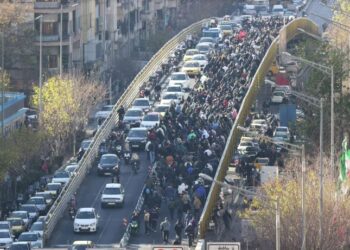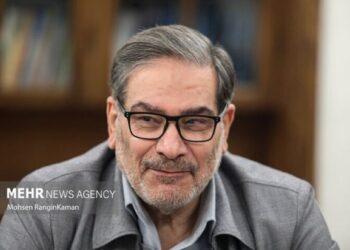By Edmond Y. Azadian
Armenia can hardly handle one calamity at a time but a rapid succession of disastrous occurrences is shaking the country to its core.
The closure of the Lachin corridor by Azerbaijan with its ensuing humanitarian consequences had left the Armenian nation reeling from Yerevan to the remote corners of the diaspora. We were in a national dialogue to find out a solution to the blockade and help the 120,000 Armenians in Nagorno-Karabakh (Artsakh) to survive. Before even solving that crisis, Armenia was hit by another catastrophe: the fire that broke out on January 19 in the army engineer sniper company of the military unit in Azat village in the province of Gegharkunik.
Details have been coming out on a daily and even hourly basis, along with the blame game as to who was the responsible party.
Fifteen soldiers died and three others hospitalized. It is believed that a total of 21 soldiers were stationed there and three escaped to safety. Therefore, there are live witnesses to give testimony to help with the investigation.
Rather than coming together and grieving the losses, the majority of the people in Armenia are in a rush to judgement; unfortunately, the calamity has become only an excuse for many people to air their views along the lines of their biases.
For the opposition, this seems to be a golden opportunity to lay the blame on the doorstep of the ruling party and ask for the resignation of Prime Minister Nikol Pashinyan and Defense Minister Suren Papikyan, as if that would solve any problem, while the enemy is on the borders and encroaching on Armenia’s sovereign territory day by day, with complete disregard for criticism and a call for restraint from many international capitals.
“Speculations are futile and irrelevant,” said Speaker of the National Assembly Alen Simonyan. “Regarding the resignation of Defense Minister Suren Papikyan. … The minister of defense cannot have anything to do with all this because in terms of his functions, he has completely done his job.”
So far, the commander of the Second Army stationed in Gegharkunik, Vahram Grigoryan, and a dozen army brass have already been sacked.
Many government figures, starting with the eloquent Andranik Kocharyan, president of the Defense Commission of the parliament, have hit the screens, trying to diffuse the situation and rebut the opposition’s accusations.
The debate and the controversy have driven the parties further from each other rather than bring them together around a national tragedy.
The loss of 15 soldiers this time around has caused a deeper trauma than the loss of 200 Armenia sustained during the flareup of September 13-14, 2022, because the latter occurred during the defense of the homeland against the Azerbaijani army. Besides, for the first time in recent memory, they fought back well, causing 700-800 enemy casualties which sent a message to the Baku leaders that they must pay a stiff price for such adventures.
Military historian Arzrun Hovhannisyan states that the military unit stationed in Azat had played a valiant role in the September conflict. That statement further supports speculations that this particular group could have remained a prime target for Azerbaijani revenge.
One of the opposition leaders, Yerevan State University lecturer and founder of the 5165 Movement Menuah Soghomonyan, firmly places the blame on the prime minister, citing Article 155 of the constitution: “We believe that de-facto Prime Minister Nikol Pashinyan and Defense Minister Suren Papikyan are to blame for this tragedy.”
Pashinyan himself has jumped into the foray to do some fence mending and during a speech in Aragatsotn Province, he said, “Some repercussions of the events show that we need to go deeper and understand the problems in their depth, in addition to the superficial problems. … These problems often arise from the lack of willpower to break out of the habit of ‘patching’ the problems.”
This debate boils down to the fundamental question of army reform. The first question that arises is why this unit was accommodated in such primitive quarters, with rudimentary means of heating. After so much bragging about army reforms, this situation flies in the face of the statements of the current authorities, who in this dire condition are conducting a witch-hunt. It was just announced that former defense minister and current member of parliament Seyran Ohanyan and another deputy, Armen Charchyan, are to be tried for illegal accumulation of property and other charges.
The opposition is not playing a constructive role and the government stoops to its level to conduct a farcical street fight rather than run a country facing incredibly difficult choices. Although the 2020 war waged by Azerbaijan set back many reforms, there had been time for those reforms before. For almost five years, Pashinyan’s administration has been blaming the misrule of the “former” regime but not done anything differently.
Even if the army reforms begin today, there are internal and external problems to solve first. Azerbaijan, for one, has warned that it will hamper any effort by Armenia to enhance its armed forces. Russia is refusing to deliver the armaments for which Armenia has already paid and Moscow has many devious ways of undermining army reforms in Armenia now that Yerevan has been looking to the international markets to replenish its military hardware. The deal with India offered good news but drone purchases from Iran may prove to be toxic politically, touching a raw nerve with the US and Israel. In short, Armenia is caught between a rock and a hard place. The West will not sell or supply any armaments as long as Armenia remains a member of the Russia-led Collective Security Treaty Organization (CSTO) but the CSTO refuses to help its member even in the face of attacks.
In the best-case scenario, if armaments were supplied, Armenia would have to develop its own military doctrine. Russian arms and military formations proved to be ineffective during the 2020 war and Armenia does not need to apologize to any party in enhancing its army according to its needs.
Let these deaths not be in vain. The fire that took the lives of 15 Armenian soldiers can serve as a useful if painful lesson to begin reforms in the army and bring it to the level of the country’s needs.








